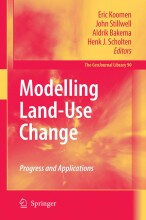Paper: accelerating land cover change in west africa
10 important questions on Paper: accelerating land cover change in west africa
In terms of magnitude, what were the main area gainers, and which lost the most?
The largest gainers in magnitude were: agriculture, followed by savanna
The largest losses were recorded in natural vegetation categories, mainly savanna, woodland&forests and steppes
![]() When looking at this picture what notable trends can be seen?
When looking at this picture what notable trends can be seen?
WIth the exception of agriculture, the homan land cover categories all occupy relatively small areas to begin with, thus their change magnitudes are comparatively minor. The importance of their increase is however revealed by their high change intensities of mostly >1.5% per year compared to the uniform 0.66 per year
On the other hand, the group of actively losing land cover categories was made up exclusively of natural land cover categories.
What does this paper state about forests which is in contradiction to earlier research?
- Higher grades + faster learning
- Never study anything twice
- 100% sure, 100% understanding
What did this paper find that is contradicting to a remote sensing based study?
How much of the study area was from begining to end nature and how much was human dominated since 1975?
Nature = 73%
human dominated = 10%
How much land cover was human dominated in 2013?
What are the advantages and disadvantages of the aggregation of the classes into natural and human dominated landcovers?
Visualisation of the extent in one map, and minimizing any noise from possible misintrepetation in the data set are the advantages.
Disadvantages are interclass changes like forest to degraded forests, loss of savanna to bare soil etc.
The settlements self only made up for 0.3 (1975) and 0.7% (2013) oof the total but how did they impact the change intensity in its vincinity?
Within 10km around a new settlement the change intensity was 3 times as high as the uniform change intensity.
1.64 as opposed to uniform 0.53% per year in the period 1975-2000
2.72 as opposed to uniform 0.91% per year in the period 2000-2013
What are the main research methods used in this paper for analysing land use change?
What are future devlopments this paper expects?
Increasing population which probalby leads to further intesification of land cover change.
settlements, plantations and irrigated agriculture are expected to further intsensly grow and endanger biodiversity
land cover change plays a big role in carbon sequestration and should be more considered when talking effective climate change adaptation and efficient carbon sink.
The question on the page originate from the summary of the following study material:
- A unique study and practice tool
- Never study anything twice again
- Get the grades you hope for
- 100% sure, 100% understanding
































